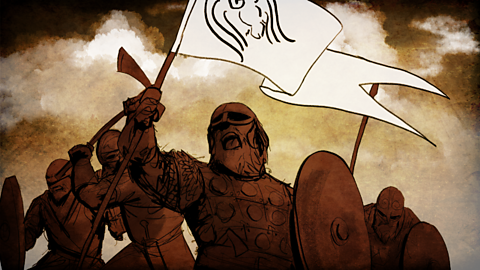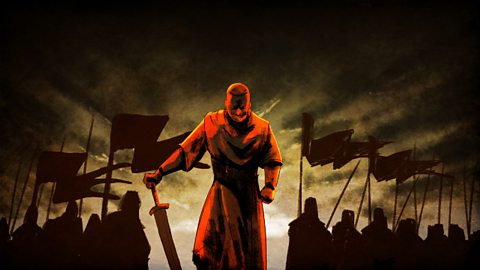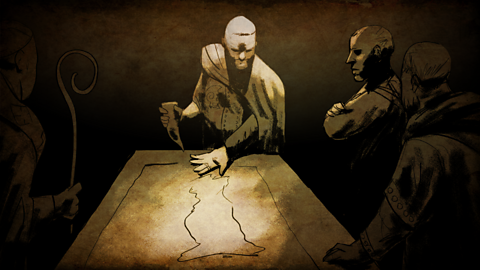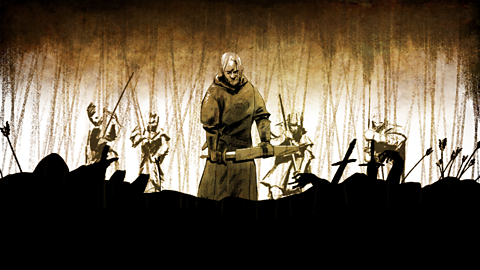Video summary
Having been made king following Edward the Confessor's death in 1066, Harold Godwinson was waiting for an invasion in the south, from Normandy.
When no invasion arrived he disbanded his army and returned to London.
But there was an invasion, from Scandinavia.
Here we have a detailed account of the first battle, at Fulford, between the contenders for the throne of England, in September, where Harald Hardrada and Tostig took on the northern army of the Anglo-Saxons led by Earl Morcar and Earl Edwin, defeated them and then captured York.
Please note: during the film it is suggested that Harald Hadrada was King Magnus I's son. It is now thought that this was not the case and Harald Hadrada was in fact King Magnus I's uncle.
Teacher Notes
Students could write a brief narrative of the Battle of Fulford, highlighting any opportunities either side had to win and then discuss 'was, the outcome of the battle, in their opinion inevitable? and why?'
This clip will be relevant for teaching History in secondary schools in the UK. This topic appears in primary KS2 and KS3, OCR, Edexcel, AQA, Eduqas, WJEC KS4/GCSE in England and Wales, CCEA GCSE in Northern Ireland and SQA National 4/5 in Scotland.
1066: The claimants to the throne (1/6) video
Edward the Confessor died in January 1066 without a son or heir. Who would be chosen to be king?

1066: The Battle of Stamford Bridge (3/6) video
The Battle of Stamford Bridge was the second major battle in the fight for the throne in 1066 and two of the four contenders were killed.

1066: The Battle of Hastings (4/6) video
William of Normandy arrives in Sussex for the decisive battle of the Norman Conquest.

1066: King William and Domesday Book (5/6) video
How William the Conqueror secured control over England.

1066: Revolt and resistance (6/6) video
How did the Anglo-Saxons resist Norman rule after 1066?

Ã˝